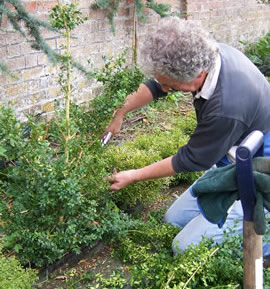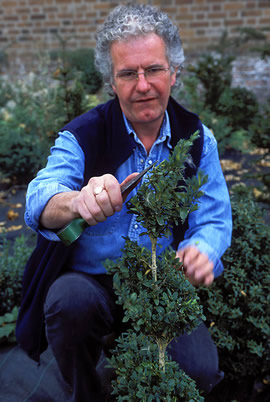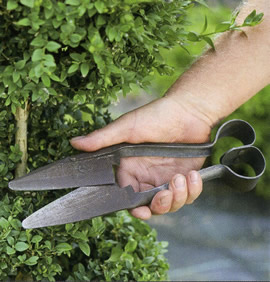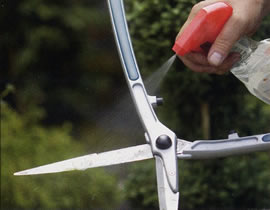Care and Maintenance of Topiary and Hedging
Topiary Planting
We have a variety of topiary shapes and loose grown plants in various sizes. We can create topiary to your specific requirements. You will find following our recommendations and suggestions for the planting of topiary and hedging.
Plant Preparation
Buxus (box or boxwood) is a very adaptable plant that likes a cool, aerated root run. The soil should be worked well with organic matter. Buxus will not thrive in water logged soil. Grit and compost may improve the soil.
If you are planting hedging such as Yew in heavy clay soils, drainage pipe may need to be used, back filled with gravel. Top dressing with bone meal in winter, blood fish and bone in spring and a top dressing of well rotted manure.
When planting in a light soil, it may be necessary to install a seep-hose or irrigation system, to establish the plant through the first season.
Plant Spacing


Cutting, Shaping and Training of Topiary Plants
Cutting topiary and hedging can commence when all danger of frost has receded. When cutting topiary or hedging avoid strong sunlight, as this will scorch the edge of the leaves. It is best to cut your topiary on a dull or wet day.
If you need to tie growth into a shape, or onto a cane, I suggest using either soft twine, or Flexi-Tie. This will ensure that as the plant develops, the ties will not cut into the stem. If the stem has gone from green wood to brown wood it will be unlikely that you will be able to re-train it.
Cutting Yew
When Yew is cut in late August or September, it is early enough for the cut edge to heal prior to frosts. Your local climate conditions may require you to cut the Yew earlier.
Renewal Pruning of Yew
Old Yew hedging that have grown too far away from the main trunk may be cut hard back by one third – one side per year. This may look very drastic but the new growth will grow from the main trunk.
Care of Topiary Plants – Container or Garden Grown
For container grown plants, i.e. Buxus, I recommend top dressing in spring with Osmacote, or similar, mixed with a handful of fresh compost. In summer months, add a liquid feed, every two or three weeks, of Phostrogen, or seaweed fertilizer, to give a good colour and health to the plant.
During dry periods, regularly water your container grown topiary plants and maintain a low moisture level in winter. Ensure that the container plants do not become pot bound. The new pot should be several centimetres wider than the root ball, and even bigger for larger topiary plants. When potting on, ensure that no air gaps are left within the pot. Compost should contain a mix of loam and slow release fertilizer.
For newly established garden grown topiary plants, extra care must be taken, ensuring regular watering, during the summer months and light watering in winter. To reduce maintenance, a drip feeder system can be installed with a battery timer.


Care and Maintenance of Topiary Tools
For detailed work, sheep shears are appropriate because they fit neatly into the palm of the hand. For hedging and larger Topiary, light weight, long handled garden sheers.
If you need to cut a large amount of hedging it is best to use powered hedge trimmer.
To sterilize your equipment I recommend the use of an ordinary house-hold anti-bacterial spray. Make sure that you clean and oil equipment before storing.
